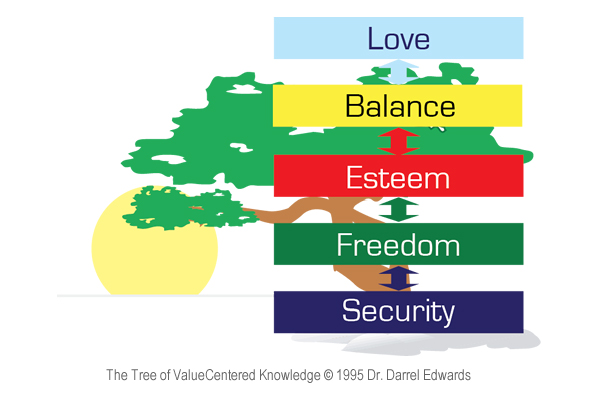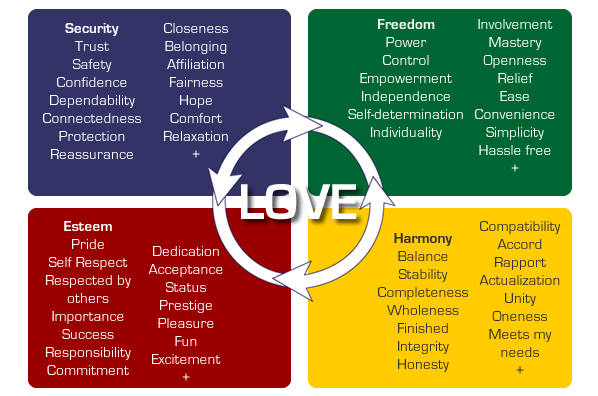The ValueCentered Method
We have developed a comprehensive theory of human behavior based on over 1.2 million cases that describes, explains, and predicts choices that any individual or group of individuals might make.
The decision-making model has been successfully applied to hundreds of organizational problems, products, and services in business, educational and developmental programs, and figures in the entertainment and political arenas.
While the basic concepts are simple and easy to teach and apply, the ValueCentered theory allows each aspect of core motives — CoreValues — to be expressed in a wide array of ways that fit qualitative and quantitative research in the widest variety of circumstances.
Strategic Vision's ValueCentered method begins by discussing the surface structure of physical product and service attributes and benefits, then links those characteristics to the underlying deep structure of emotions and values to understand these issues and their impact on the overall experience.
The significance of this approach can best be understood by examining the interdependent nature of the emotions and their impact on the decision-making process. Based on a clustering of emotions from more than 1.2 million ValueCentered interviews, a clear structure emerges.
Tree of ValueCentered Knowledge

|
Understanding CoreValues:
|
Failure to reach one of these levels adequately makes it impossible to achieve the one above it. For example, without an adequate sense of safety/security/trust, one cannot truly experience freedom.
ValueCentered Expressions
|
Exploring CoreValues: The questions are always: What mix of motivation describes the choices made by your people/customers? What words and phrases are their language for expressing the basic motives/emotions? There are hundreds of ways to verbalize these emotions. All of them cluster into the four main categories of Security, Freedom, Self Esteem, and Balance. An example of some of the words and phrases used to describe each of these four key emotional categories appears on the right. |

|
Applications
The ValueCentered Method has been applied to a wide range of research and many types of studies including:
- Brand equity/Brand image
- Brand Index/Brand Commitment studies
- Communications development
- Concept development and testing
- Corporate culture consulting
- Customer satisfaction, retention, and loyalty
- Equity extensions / New products
- Future directions - ValueCentered trends
- Image studies
- Leverage Analysis
- Product development
- Strategic Positioning
- Teen and Adult panels and tracking
- Total Advertising Impact studies
- Total Quality Experience studies
- Total Value Index studies
- True Innovators
The Edwards Commitment Scale
The Edwards Commitment Scale is a super-ordinal discrete-step "quantum" instrument that measures the strength and nature of the quality of the emotional connection between an individual and the individual's experience ranging from it being a "Failure," "Unsatisfactory," "Satisfactory," Excellent," or "Delightful" for Scale 1 and from a "Failure," "Unsatisfactory," "Satisfactory," Excellent," "Delightful," or "Love" for Scale 2. The Scales were initiated in 2002 by Dr. Darrel Edwards from research done worldwide in the US, Mexico, Canada, England, Germany, France, Spain, Japan and Russia between 1990 and 2002 on the nature and function of super-ordinal discrete-step instruments with extreme anchors.
